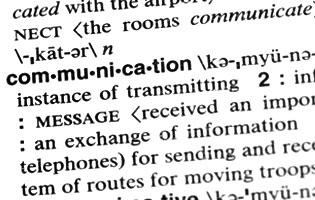


C
Capital Expenses:
This type of expense is most often defined by reference to generally accepted accounting principles (GAAP), but GAAP does not provide definitive guidance on all possible expenditures. Accountants will often disagree on whether or not to include certain items.
Capitalization:
A method of determining value of real property by considering net operating income divided by a predetermined annual rate of return. See "Capitalization Rate".
Capitalization Rate:
The rate that is considered a reasonable return on investment (on the basis of both the investor's alternative investment possibilities and the risk of the investment). Used to determine and value real property through the capitalization process. Also called "free and clear return". See "Capitalization".
Carrying Charges:
Costs incidental to property ownership, other than interest (i.e. taxes, insurance costs and maintenance expenses), that must be absorbed by the landlord during the initial lease-up of a building and thereafter during periods of vacancy.
Certificate of Occupancy:
A document presented by a local government agency or building department certifying that a building and/or the leased premises (tenant's space), has been satisfactorily inspected and is/are in a condition suitable for occupancy.
Chapter 7:
That portion of the Federal Bankruptcy code that deals with business liquidations. Chapter 11 is that part of the Federal Bankruptcy code that deals with business reorganizations.
Chapter 11:
That portion of the Federal Bankruptcy code that deals with business reorganizations. Chapter 7 is that part of the Federal Bankruptcy code that deals with business liquidations.
Clear-Span Facility:
A building, most often a warehouse or parking garage, with vertical columns on the outside edges of the structure and a clear span between columns.
Circulation Factor:
Interior space required for internal office circulation not accounted for in the Net Square Footage. Based upon our experience, we use a Circulation Factor of 1.35 x the Net Square Footage for office and fixed drywall areas and a Circulation Factor of 1.45 x the Net Square Footage for open area workstations. See also "Net Square Footage and "Usable Square Footage.
Common Area:
There are two components of the term "common area". If referred to in association with the Rentable/Usable or Load Factor calculation, the common areas are those areas within a building that are available for common use by all tenants or groups of tenants and their invitees (i.e. lobbies, corridors, restrooms, etc.). On the other hand, the cost of maintaining parking facilities, malls, sidewalks, landscaped areas, public toilets, truck and service facilities, and the like are included in the term "common area" when calculating the tenant's pro-rata share of building operating expenses.
Common Area Maintenance (CAM):
This is the amount of Additional Rent charged to the tenant, in addition to the Base Rent, to maintain the common areas of the property shared by the tenants and from which all tenants benefit. Examples include:
snow removal, outdoor lighting, parking lot sweeping, insurance, property taxes, etc. Most often, this does not include any capital improvements (see "Capital Expenses") that are made to the property.
Comparables:
Lease rates and terms of properties similar in size, construction quality, age, use, and typically located within the same sub-market and used as comparison properties to determine the fair market lease rate for another property with similar characteristics.
Concessions:
Cash or cash equivalents expended by the landlord in the form of rental abatement, additional tenant finish allowance, moving expenses, cabling expenses or other monies expended to influence or persuade the tenant to sign a lease.
Condemnation:
The process of taking private property, without the consent of the owner, by a governmental agency for public use through the power of eminent domain. See also "Eminent Domain".
Construction Management:
The actual construction process is overseen by a qualified construction manager who ensures that the various stages of the construction process are completed in a timely and seamless fashion, from getting the construction permit to completion of the construction to the final walk-through of the completed leased premises with the tenant.
Consumer Price Index ("CPI"):
Measures inflation in relation to the change in the price of a fixed market basket of goods and services purchased by a specified population during a "base" period of time. It is not a true "cost of living" factor and bears little direct relation to actual costs of building operation or the value of real estate. The CPI is commonly used to increase the base rental periodically as a means of protecting the landlord's rental stream against inflation or to provide a cushion for operating expense increases for a landlord unwilling to undertake the record keeping necessary for operating expense escalations.
Contiguous Space:
(1) Multiple suites/spaces within the same building and on the same floor which can be combined and rented to a single tenant. (2) A block of space located on multiple adjoining floors in a building (i.e., a tenant leases floors 6 through 12 in a building).
Contract Documents:
The complete set of design plans and specifications for the construction of a building or of a building’s interior improvements. Working Drawings specify for the contractor the precise manner in which a project is to be constructed. See also "Specifications" and "Working Drawings".
Conveyance:
Most commonly refers to the transfer of title to property between parties by deed. The term may also include most of the instruments by which an interest in real estate is created, mortgaged or assigned.
Core Factor:
Represents the percentage of Net Rentable Square Feet devoted to the building’s common areas (lobbies, rest rooms, corridors, etc.). This factor can be computed for an entire building or a single floor of a building. Also known as a Loss Factor or Rentable/Usable (R/U) Factor, it is calculated by dividing the rentable square footage by the usable square footage."
Cost Approach:
A method of appraising real property whereby the replacement cost of a structure is calculated using current costs of construction.
Covenant:
A written agreement inserted into deeds or other legal instruments stipulating performance or non-performance of certain acts or, uses or non-use of a property and/or land.
Covenant of Quiet Enjoyment:
The old "quiet enjoyment" paragraph, now more commonly referred to as "Warranty of Possession", had nothing to do with noise in and around the leased premises. It provides a warranty by Landlord that it has the legal ability to convey the possession of the premises to Tenant; the Landlord does not warrant that he owns the land. This is the essence of the landlord's agreement and the tenant's obligation to pay rent. This means that if the landlord breaches this warranty, it constitutes an actual or constructive eviction.
Cumulative Discount Rate:
The interest rate used in finding present values that when applied to the rental rate takes into account all landlord lease concessions and then expressed as a percentage of base rent.
A
B
C
D
E
F
G
H
I
J
K
L
M
N
O
P
Q
R
S
T
U
V
W
X
Y
Z
View All
GLOSSARY
